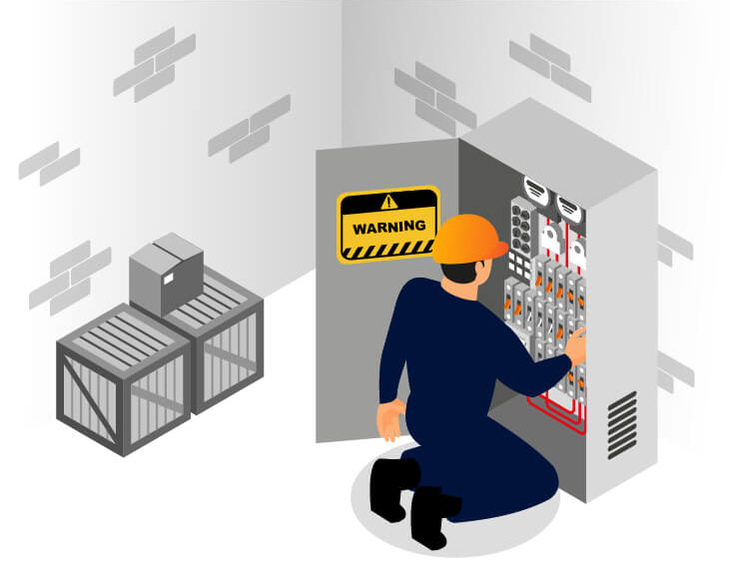An arc flash is a sudden release of energy caused by an electrical fault, resulting in extreme heat, intense light, and explosive pressure. This phenomenon can cause severe injuries, equipment damage, and costly downtime. Conducting an Arc Flash Study is a critical safety measure for workplaces handling electrical systems. It helps identify potential hazards, mitigate risks, and ensure compliance with safety standards like NFPA 70E and OSHA regulations.
This guide provides an in-depth understanding of what an arc flash study entails, its importance, the steps involved, and how it enhances workplace safety.
What Is an Arc Flash Study?
An Arc Flash Study, also known as an Arc Flash Hazard Analysis, evaluates electrical systems to determine the likelihood and severity of arc flash incidents. It involves:
– Calculating Incident Energy: Determining the energy level workers might be exposed to during an arc flash.
– Defining Hazard Boundaries: Establishing safe working distances.
– Recommending Protective Measures: Providing solutions to mitigate risks, including equipment upgrades and personal protective equipment (PPE) requirements.
Why Is an Arc Flash Study Important?
- Enhancing Worker Safety:
– Prevents injuries such as burns, hearing damage, or blindness.
– Reduces the risk of fatalities due to high-energy electrical incidents.2. Ensuring Compliance:
– Adheres to NFPA 70E, OSHA, and IEEE 1584 standards.
– Demonstrates organizational commitment to safety during audits.3. Protecting Equipment and Reducing Costs:
– Prevents equipment damage and downtime caused by electrical faults.
– Lowers the likelihood of expensive repairs or replacements.4. Raising Awareness and Preparedness:
– Educates workers on electrical hazards and proper safety protocols.
Steps Involved in an Arc Flash Study
- Data Collection:
– Gather detailed information on the electrical distribution system, including one-line diagrams, equipment ratings, and protective device settings.2. System Modeling:
– Use specialized software to model the electrical system and simulate fault conditions.3. Fault Current Analysis:
– Calculate available fault currents to assess the potential severity of an arc flash.4. Incident Energy Calculation:
– Determine the energy level workers might encounter during an arc flash at various points in the system.5. Define Arc Flash Boundaries:
– Establish safe working distances to prevent injuries. These include:
– Limited Approach Boundary: Safe distance from exposed live parts.
– Restricted Approach Boundary: For qualified personnel only, with specific PPE.
– Arc Flash Boundary: Maximum distance where a second-degree burn may occur.6. Labeling Electrical Equipment:
– Place clear, compliant labels on electrical equipment, indicating arc flash boundaries, incident energy levels, and PPE requirements.7. Mitigation Strategies:
– Recommend methods such as upgrading protective devices, improving insulation, or enhancing maintenance practices to reduce arc flash risks.8. Report and Training:
– Deliver a detailed report with findings and recommendations.
– Conduct training sessions for workers to understand risks, labels, and safety protocols.
Mitigation Techniques for Arc Flash Hazards
– Install Arc-Resistant Equipment: Minimize arc flash risks by using robust electrical panels.
– Optimize System Settings: Adjust relay and breaker settings to reduce incident energy levels.
– Perform Routine Maintenance: Ensure all equipment is clean, dry, and functioning properly to avoid faults.
– Implement Remote Operation: Use remote racking systems to reduce worker exposure to high-risk areas.
– Wear Proper PPE: Equip workers with flame-resistant clothing, face shields, gloves, and boots suitable for the calculated incident energy levels.
Standards Governing Arc Flash Studies
– NFPA 70E: Outlines workplace electrical safety requirements.
– OSHA: Mandates hazard assessments and safe work practices.
– IEEE 1584: Provides methodologies for calculating arc flash hazards.
Best Practices for Arc Flash Safety
- Regular Updates:
– Conduct arc flash studies every 5 years or when system changes occur.2. Worker Training:
– Educate all personnel on arc flash risks, boundaries, and PPE usage.3. Audit and Inspect:
– Regularly review safety protocols and equipment condition.4. Collaborate with Experts:
– Work with certified professionals to ensure accurate assessments and compliance.
An Arc Flash Study is not just a compliance requirement—it’s a proactive approach to safeguarding lives and ensuring the uninterrupted operation of critical electrical systems. By identifying hazards, implementing protective measures, and fostering a culture of safety, organizations can significantly reduce risks and protect their most valuable assets: their people and infrastructure.
Invest in an Arc Flash Study today to create a safer and more resilient workplace!


